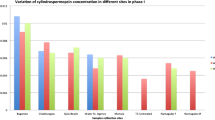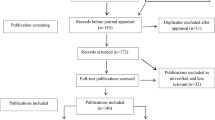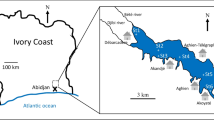Abstract
Massive cyanobacterial water blooms and production of toxins (cyanotoxins) have become a worldwide problem. In this report, we present results of cyanotoxins analyses (peptide microcystins, alkaloid cylindrospermopsin) in the Czech Republic reservoirs using HPLC-PDA and ELISA. Our study suggests the occurrence of cylindrospermopsin in the Czech Republic for the first time (particularly, in water blooms containing Aphanizomenon klebahnii). We also discuss human health risks associated with microcystins in relation to the drinking water guideline value of 1.0 μg/l as recommended by the World Health Organization.



Similar content being viewed by others
References
Babica P, Kohoutek J, Bláha L, Adamovský O, Maršálek B (2006) Evaluation of extraction approaches linked with HPLC and ELISA for analyses of microcystin-LR, -RR and -YR in freshwater sediments with variable organic material content. Anal Bioanal Chem 385:1545–1551
Byth S (1980) Palm Island mystery disease. Med J Aust 2:40–42
Chorus I, Bartram J (1999) Toxic cyanobacteria in water: a guide to their public health consequences, monitoring and management. E&FN Spon, London (ISBN:0-419-23930-8)
Fastner J, Heinze R, Humpage AR, Mischke U, Eaglesham GK, Chorus I (2003) Cylindrospermopsin occurrence in two German lakes and preliminary assessment of toxicity and toxin production of Cylindrospermopsis raciborskii (Cyanobacteria) isolates. Toxicon 42(3):313–321
Falconer I (2005) Cyanobacterial toxins of drinking water supplies: cylindrospermopsins and microcystins. CRC, Boca Raton (ISBN:0-415-31879-3)
Komárek J (1996) Determination of planktonic cyanobacteria (in Czech). In: Maršálek B, Keršner V, Marvan P (eds) Cyanobacterial water blooms. Nadatio Flos Aquae, Brno, pp 34–69
Maršálek B, Bláha L, Turánek J, Neča J (2001) Microcystin-LR and total microcystins in cyanobacterial blooms in the Czech Republic 1993–2000. In: Chorus I (eds) Cyanotoxins—occurrence, causes, consequences. Springer, Berlin pp. 56–62 (ISBN:3-540-64999-9)
Ohtani I, Moore RE, Runnegar MTC (1992) Cylindrospermopsin—a potent hepatotoxin from the blue-green alga Cylindrospermopsis raciborskii. J Am Chem Soc 114(20):7941–7942
Preussel K, Stuken A, Wiedner C, Chorus I, Fastner J (2006) First report on cylindrospermopsin producing Aphanizomenon flos-aquae (Cyanobacteria) isolated from two German lakes. Toxicon 47(2):156–162
Saker ML, Griffiths DJ (2000) The effect of temperature on growth and cylindrospermopsin content of seven isolates of Cylindrospermopsis raciborskii (Nostocales, Cyanophyceae) from water bodies in northern Australia. Phycologia 39(4):349–354
Spoof L, Berg KA, Rapala J, Lahti K, Lepisto L, Metcalf JS, Codd GA, Meriluoto J (2006) First observation of cylindrospermopsin in Anabaena lapponica isolated from the boreal environment (Finland). Environmental Toxicology 21(6):552–560
US EPA (1989) Risk assessment—guidance for superfund, vol I. Human health manual (Part A), interim final. Office of Emergency and Remedial Response US EPA, Washington DC
Welker M, Steinberg C, Jones G (2001) Release and persistence of microcystins in natural waters. In: Chorus I (ed)Cyanotoxins—occurrence, causes, consequences. Springer, Berlin, pp 83–101
Welker M, Bickel H, Fastner J (2002) HPLC-PDA detection of cylindrospermopsin—opportunities and limits. Water Res 36(18):4659–4663
WHO (1998) Guidlines for drinking-water quality. Second edition, Addendum to vol 2, Health criteria and other supporting information. World Health Organisation, Geneva
Zeck A, Weller M, Bursill D, Niessner R (2001) Generic microcystin immunoassay based on monoclonal antibodies against ADDA. Analyst 126:2002–2007
Acknowledgments
The research was supported by the Ministry of Education CR projects IM6798593909 (“Research Centre for Bioindication and Revitalization”) and 0021622412 (“INCHEMBIOL”).
Author information
Authors and Affiliations
Corresponding author
Rights and permissions
About this article
Cite this article
Bláhová, L., Babica, P., Adamovský, O. et al. Analyses of cyanobacterial toxins (microcystins, cylindrospermopsin) in the reservoirs of the Czech Republic and evaluation of health risks. Environ Chem Lett 6, 223–227 (2008). https://doi.org/10.1007/s10311-007-0126-x
Received:
Accepted:
Published:
Issue Date:
DOI: https://doi.org/10.1007/s10311-007-0126-x




